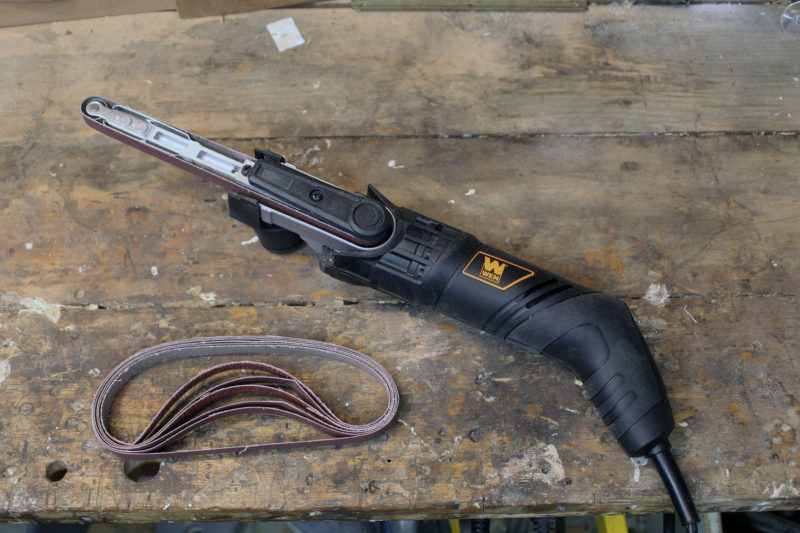 Photographs by the author
Photographs by the authorThe Wen 6307 weights a bit over 2 lbs and its grip is just 2″ in diameter. It’s easy to work with.
I was introduced band files when I was working at the Smithsonian, making the brass mounts that support museum artifacts on display. The mounts were often complex shapes that needed to be sculpted to blend in with the objects they supported. The band file could do the work quickly and with a light touch that wouldn’t damage delicate bits of brass.
The band file I’d grown to like was very expensive, so I never bought one. I did buy an inexpensive band-file attachment for an angle grinder, but it was a bad pairing. Angle grinders are too heavy, powerful, and loud—and spin too fast—for the work I do with a band file.
The Wen 1/2″ x 18″ belt sander, model 6307, was what I was hoping to find, and it came at a very affordable price. It has a motor about the size of a Dremel tool and weighs, with cord, just 2 lbs 6 oz. To install a belt on it, you press on the front roller to push the arm against its tensioning spring until it clicks; that shortens the arm about 3/8″ so a belt can be installed. A fresh belt can be a bit difficult to put on, even with the arm retracted, but it will eventually slip into place. Used belts that have stretched just a bit tend to go on more easily. The push of a button releases the arm, putting the belt in tension.
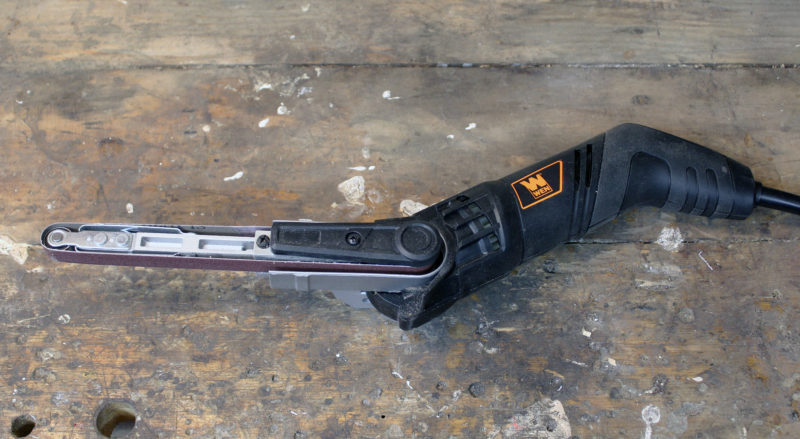
The arm pivots through 55 degrees.
The arm can be pivoted 25 degrees up or down from its straight position to accommodate jobs at odd angles. A fitting for dust collection clips onto the tool’s right side. It covers the belt tensioning button, so the fitting has to be removed when changing belts. With a vacuum attached, the dust collection is very effective; I don’t see any dust escaping.
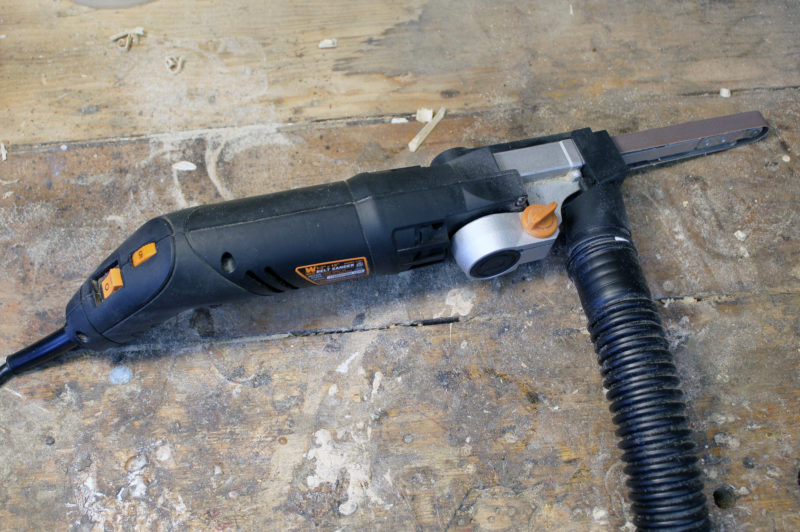
The right side of the tool accepts a clip-on bracket that fits a 1-1/4″ dust-collection hose.
Just behind the front roller there are two base plates, one on top, one on the bottom, that make contact with the sanding belt and back it up for working a flat surface. The plates are slightly narrower than the sanding belts, so the belts can work into corners. Closer to the 6307’s body the belt is unsupported, so it will take a gentle curve for working convex contours and softening corners. The front roller has a diameter of 5/8” and can reach into concave surfaces, though it works like a gouge and can’t fair a curve.
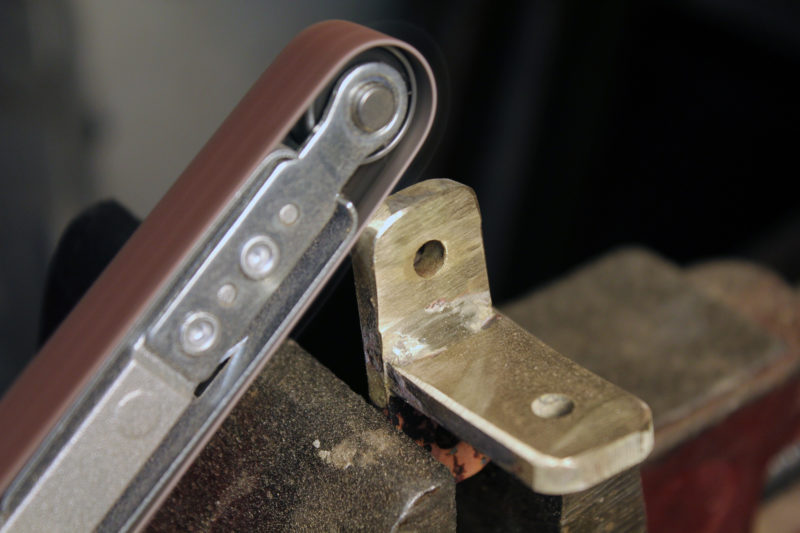
This newly brazed brass fitting was easy to clean and shape with the Wen 6307. Note that the sanding belt extends slightly beyond the base plates below the front roller, making it possible to reach the inside corner and smooth the fillet of silver braze.
A dial at the back of the 6307 controls the speed, which ranges from 1,100 to 1,800 feet per minute. When turned on, the tool isn’t disagreeably loud at its lowest speed, but at half speed it starts to get loud and whine, and it’s certainly time for hearing protection. The vents for the motor’s cooling are at the forward end of the body, where I like to grip the tool for fine control, but when the air flowing from the vents gets hot, it’s time to back up. Farther back on the body, a rubber insert assures a non-slip grip.
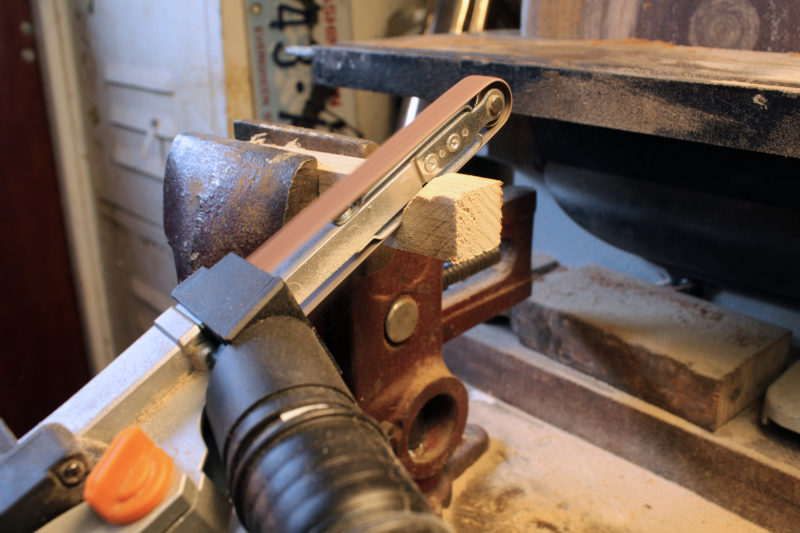
As a test of sanding speed, I “sawed” through a 1″-square piece of spruce with a 60-grit belt running at top speed. It took less than 40 seconds. The dust collection attachment worked effectively; the sanding dust on the workbench is from earlier work.
As a test of sanding power, I put an 80-grit belt on the 6307, dialed the speed up to the maximum, and cut a 1/2″-wide “kerfs” all the way through a 1″ x 1″ piece of softwood. The 6307 could lop off the end of that stick in an average of 37 seconds. I had to let the belt do the work—if I applied a firm pressure, the drive wheel would slip and the belt would bog down or stop.
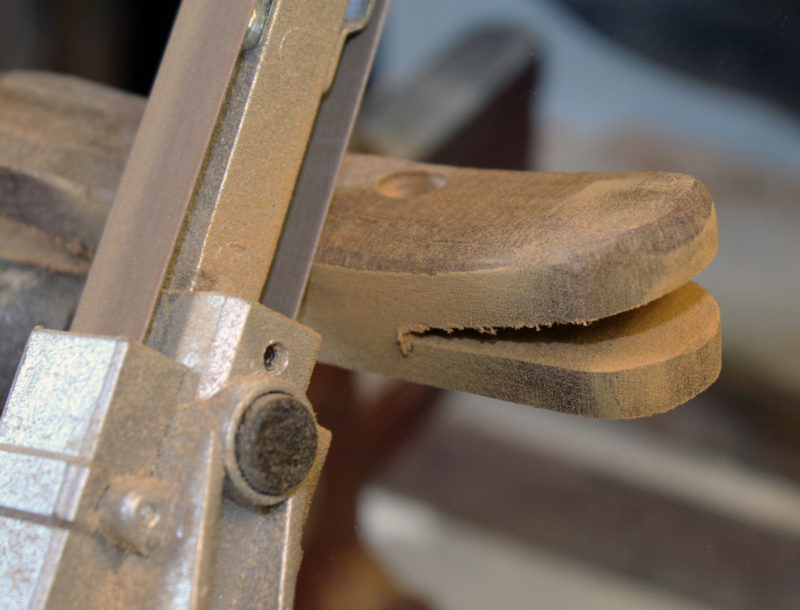
The portions of the sanding belt that are not backed by the base plates are well suited for working curved surfaces like the top of this wooden cleat.
The 6307 comes in handy for working the saddle-back shape between the horns of wooden cleats and the complex transition from blades to looms on oars and paddles. On metal, the 6307 knocks down sharp edges quickly and excels at working inside corners and cleaning up flux and oxidation left by brazing.
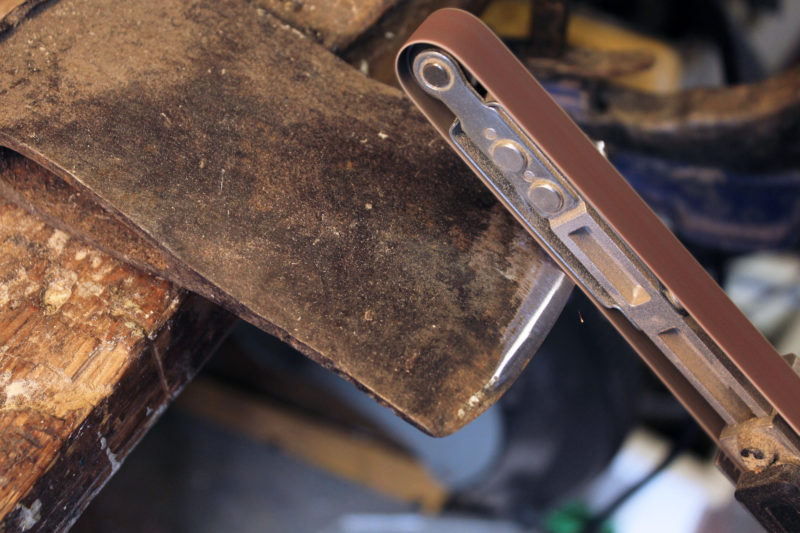
The belts with the finer grits can be used for quick sharpening of tools that don’t require precise edges. For this axe, I started with a 220-grit belt and finished with a 320 and the edge was ready for chopping.
The 1/2″ x 18″ sanding belts cost around $1 each and come in grits from 40- to 400-grit, so the 6307 can take on jobs from the rough shaping of wood to quick sharpening jobs on outdoor equipment such as hatchets and machetes.![]()
Christopher Cunningham is the editor of Small Boats Magazine.
The 6307 1/2″ x 18″ file sander is manufactured by Wen. Wen currently lists the tool as out of stock. It is available from other sources online. The one shown here was purchased from Amazon for $36.40. The current price is $44.37. The Grizzly T10745 appears to be identical, and is listed in the Grizzly catalog at $59.95
Is there a product that might be useful for boatbuilding, cruising, or shore-side camping that you’d like us to review? Please email your suggestions.
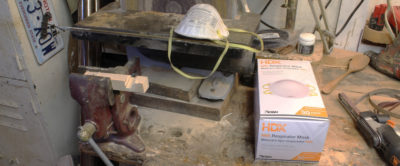





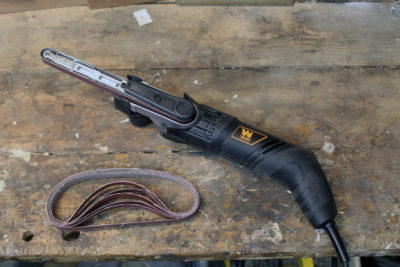


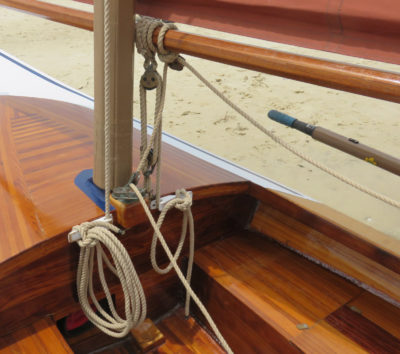
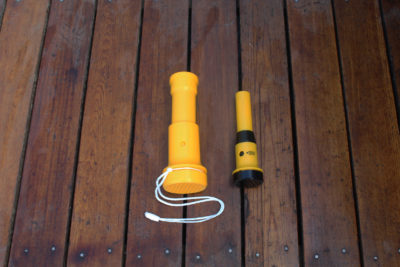
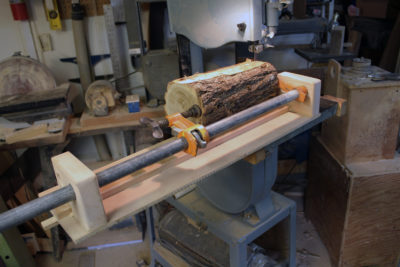
A nice review of a little known but very useful tool.There is nothing quite like it and at such a low price it is worth having in your toolbox.
I have had a Black and Decker version for some years and it has been invaluable. Mine does not have the dust collection attachment so the Wen one is superior.
I like that, another tool that you may only use once a year, but could pull you out of a jam. It is something that I might not buy but a good present to ask for from our daughter, she never knows what to buy for birthdays and holidays. It is right up there with the Dremel tool and Vise-Grips, two tools that pull me out of a lot of jams.
Interesting tool review…modest price but with unique capabilities, I should think.